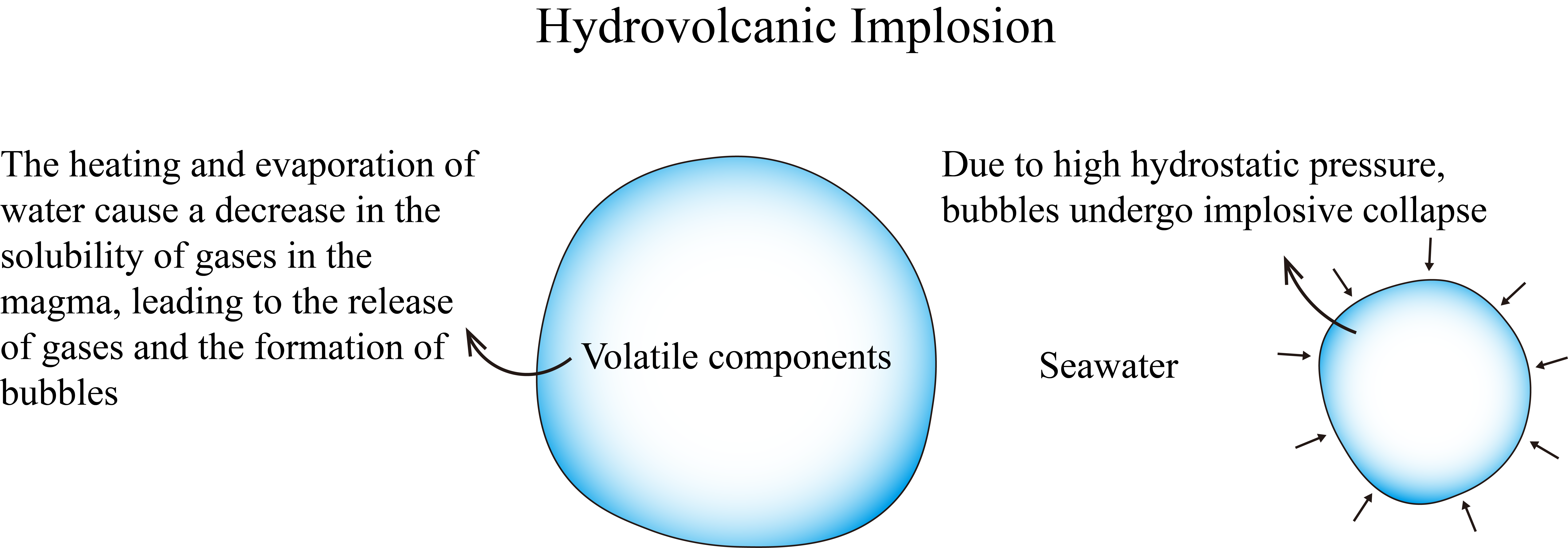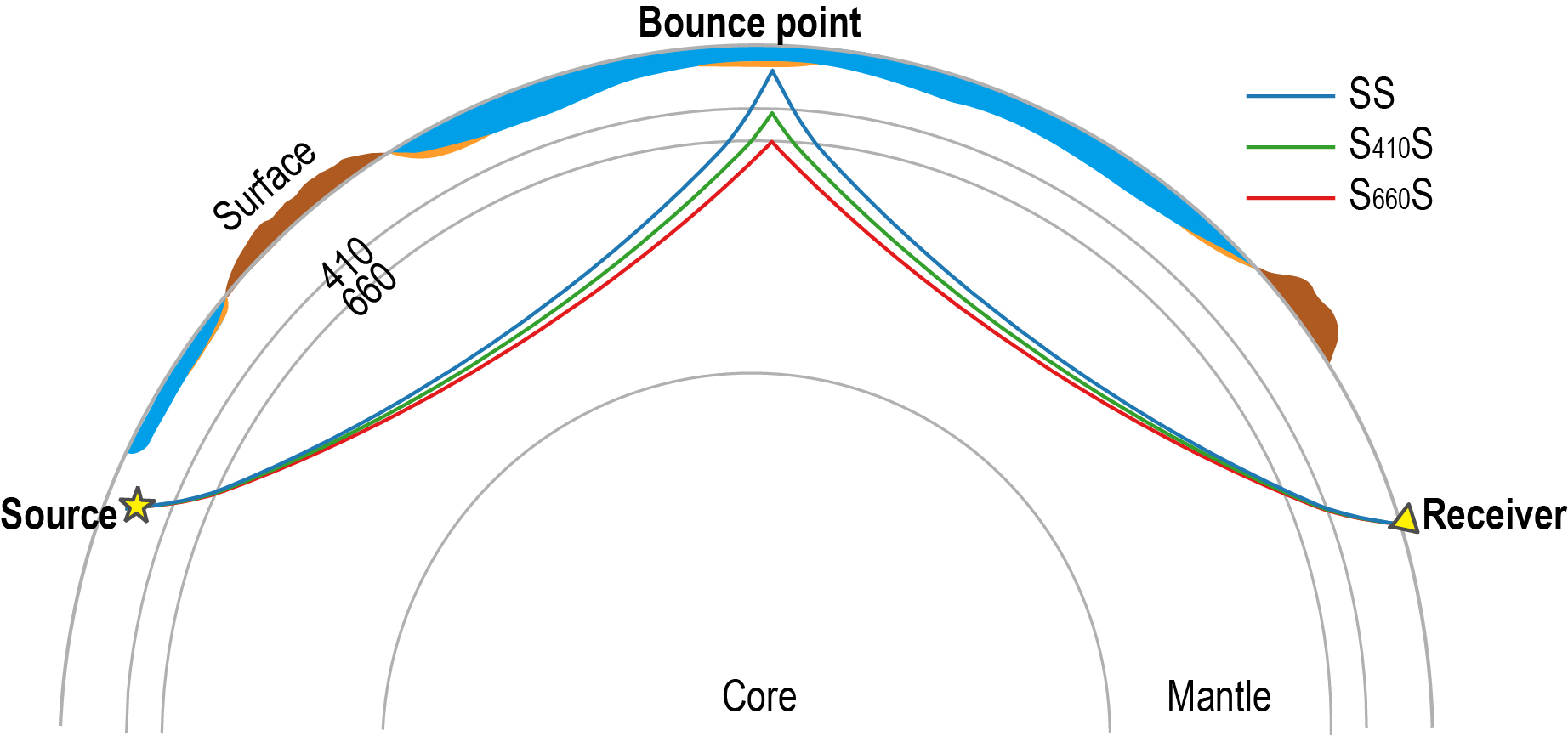Investigating source mechanism of impulsive events during the 2015 Axial Seamount eruption
We analyzed the 2015 seismic data from Axial Seamount to identify the source mechanism behind impulsive seismic events typically linked to lava eruptions on the seafloor. Using waveform cross-correlation and first-motion polarity picking, we constrained the moment tensor for numerous event clusters. Due to the limited number of sampling points, we cannot directly determine the source mechanism, but we have been able to rule out a range of possibilities. We ultimately conclude that impulsive signals are related to bubble dynamics, and provide additional information about the bubbles.
Investigation of Effects of Near-Surface Complexities on Measurement of Mantle Discontinuity Using SS and Its Precursors
Seismic observations of the mantle discontinuities at depths of 410 and 660 km provide crucial information to constrain the thermal and compositional states and further shape our understanding of mantle dynamics. The topography and impedance contrast of the mantle discontinuities, at both global and regional scales, have been imaged through differential travel times and amplitude ratios between SS and its precursors. However, a relatively simple reference phase (SS) is often assumed, which may overlook potential bias caused by near-surface complexities. To assess these effects, we developed an algorithm to simulate the waveforms of SS and its precursors efficiently based on the propagation matrix method. We found that the crustal thickening increases the differential travel times but does not change the amplitude ratios much, while the sedimentary layer significantly affects both the differential travel times and amplitude ratios. The global anomalies of differential travel times and amplitude ratios are mapped incorporating earth models from CRUST1.0 and PREM. The time shift can reach ∼9 s, which will bring a depth bias of mantle discontinuity of more than 20 km, while the amplitude ratio anomaly is up to ∼40%, which will make the impedance contrast of the mantle discontinuity overestimated. The near-surface complexities cannot be ignored in the investigation of mantle discontinuities with SS precursors, especially when the bounce points located in the regions with sediment.